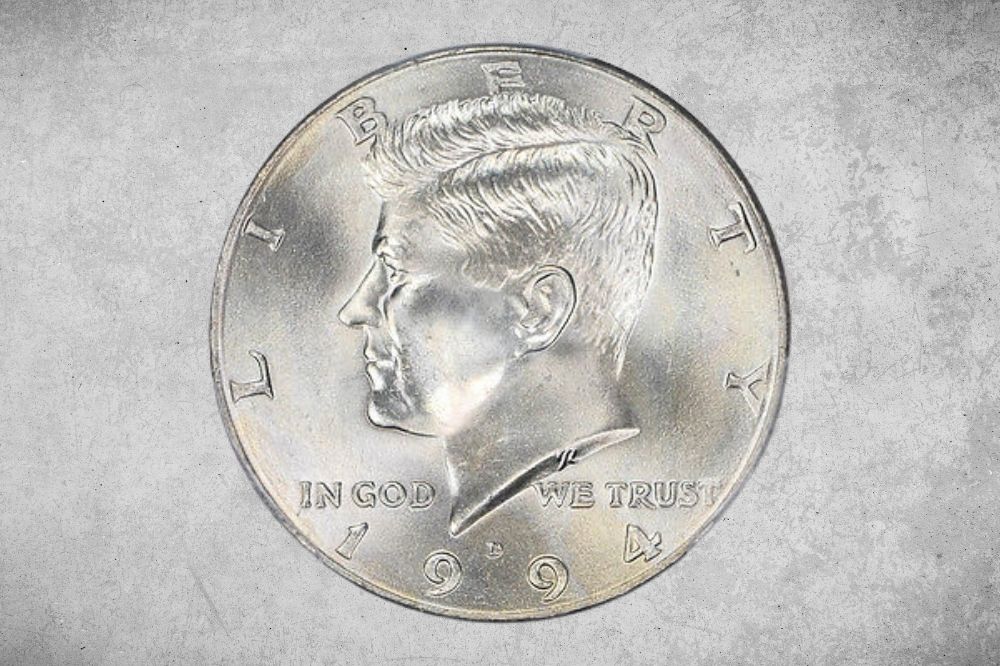The 1994 half dollar denomination features one of the most known contemporary American presidents: John F Kennedy. This particular coin was minted in four different varieties all of which have different values.
The Kennedy half dollar coin has seen changes in its composition since it first entered production. In those early years of the coin, many people didn’t want to spend it and put it in circulation. This was due to the popularity of the president portrayed on the coin.
Learn more about the 1994 half dollar coin and its value, varieties, history, and errors below.
1994 half dollar value Details
- Type: Kennedy half dollar
- Year of minting: 1994
- Place of minting: Denver, Philadelphia, San Francisco
- Quantity produced: 50,816,033
- Face Value: $0.50
- Price: $0.50 to $37.00 (or more)
- Mass: 11.34 grams
- Edge: Reeded
- Designer: Gilroy Roberts (obverse)/Frank Gasparro (reverse)
- Composition: 25% nickel and 75% copper
- Diameter: 30.61 mm
- Thickness: 2.15 mm
In 1994, the Kennedy half dollar were produced in 4 different series. There are the 1994 P, 1994 D, 1994 S Proof, and 1994 S Silver Proof. The first two were minted in Philadelphia and Denver, respectively; and the proof coins were produced in San Francisco. Approximately half of all the Kennedy coins minted in 1994 were minted in Denver.
One interesting detail about the 1994 half dollar is the designers – it has two of them. Gilroy Roberts designed the obverse while Frank Gasparro was responsible for the reverse.
As you can see in the chart above, the composition of the 1994 half dollar is 75€% copper and 25% nickel. The very first Kennedy half dollar was composed of 90% silver and 10% copper. The silver quantity in the coin was steadily declining through the production of the ’60s and ‘70s. Eventually, they replaced silver with copper as many other coins did.
The value of each coin series is different. A regular (non-proof coin) which been circulated is only as valuable as its face value, while proof coins can be worth several thousands of dollars.
Let’s divine into each coin variety individually and look at its value.
1994 Half Dollar Value Chart |
|||
| Coin | Condition | Grade | Value |
| 1994 D Half Dollar | Circulated | Not Graded | $0.50 – $3 |
| 1994 D Half Dollar | Uncirculated | MS 65 | $12 – $20 |
| 1994 P Half Dollar | Circulated | MS 66 | $10 – $23 |
| 1994 S Proof | Uncirculated | PR 70 | $19 – $53 |
| 1994 S Silver Proof | Uncirculated | PR 70 | $47 – $207 |
1994, the main Mints in the United States are located in Denver, Philadelphia, and San Fransisco. The four different varieties were minted in one of these locations. The majority of all the coins were minted in Denver. The proof and silver proof coins were all produced in the San Francisco mint.
The mint mark on each coin can be found on the obverse. The exact location is underneath Kennedy’s neckline, slightly above and in between the two 9s of the word 1994.
Also Read: Top 11 Most Valuable Canadian Coins Worth Money
1994 half dollar Value Value and Varieties
1994 D Half Dollar Value
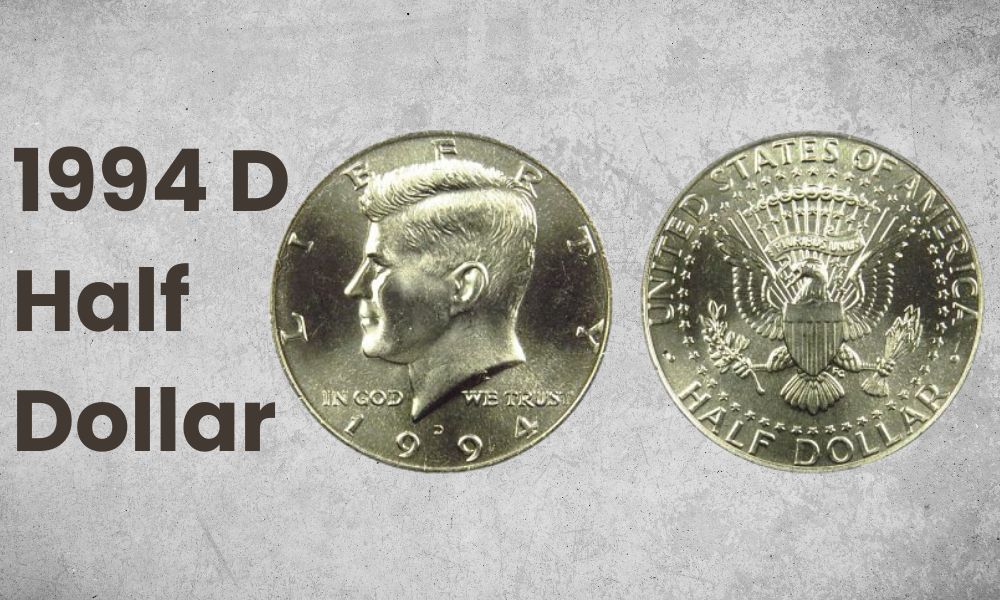
- Mint Mark: D
- Place of minting: Denver
- Quantity produced: 23,828,110
- Face Value: $0.50
- Price: $0.50 to $3.00
- Mass: 11.34 grams
- Edge: Reeded
- Designer: Gilroy Roberts, Frank Gasparro
- Composition: 25% nickel and 75% copper
- Diameter: 30.61 mm
- Thickness: 2.15 mm
At the end of 1994, close to 24 million 1994 D half dollar coins were minted in Denver. This is a hard coin to find well-preserved today. Anything above grade MS 66 of this particular coin is rare. If you do come across one of the 1994 D half dollars in decent condition, it will be valued at around $3.
1994 P Half Dollar Value
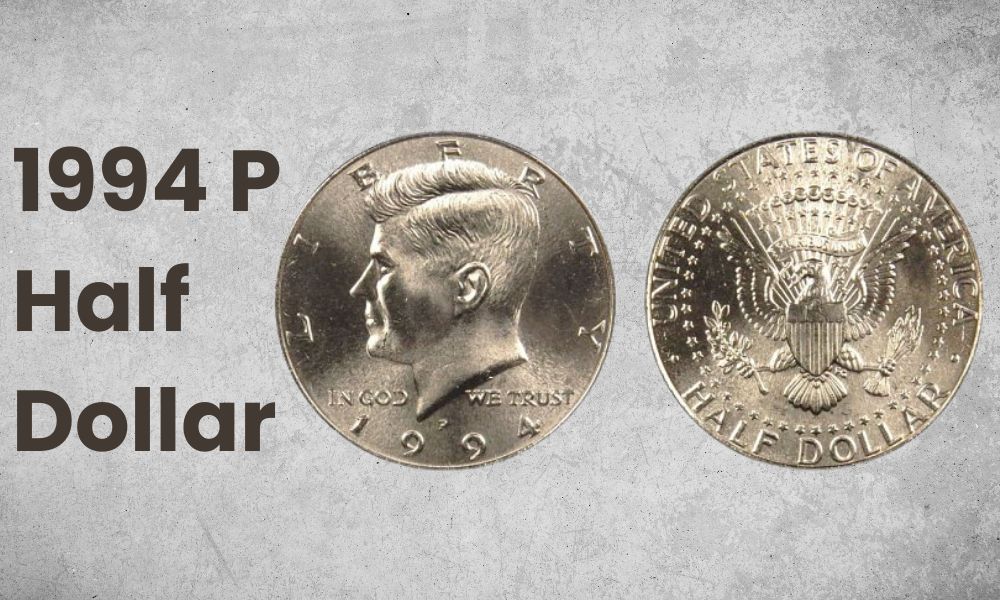
- Mint Mark: No mint mark
- Place of minting: Denver
- Quantity produced: 23,718,000
- Face Value: $0.50
- Price: $0.50 to $3.00
- Mass: 11.34 grams
- Edge: Reeded
- Designer: Gilroy Roberts, Frank Gasparro
- Composition: 25% nickel and 75% copper
- Diameter: 30.61 mm
- Thickness: 2.15 mm
The 1994 P half value is about the same as the ones minted in Denver. The only difference is the quantity produced. By the end of 1994, there were 23,718,000 coins minted in Philadelphia.
As you see, the mint In Philadelphia produced slightly less than in Denver. The half dollars stuck in Philadelphia feature no mint mark.
1994 S Kennedy Half Dollar (Proof)
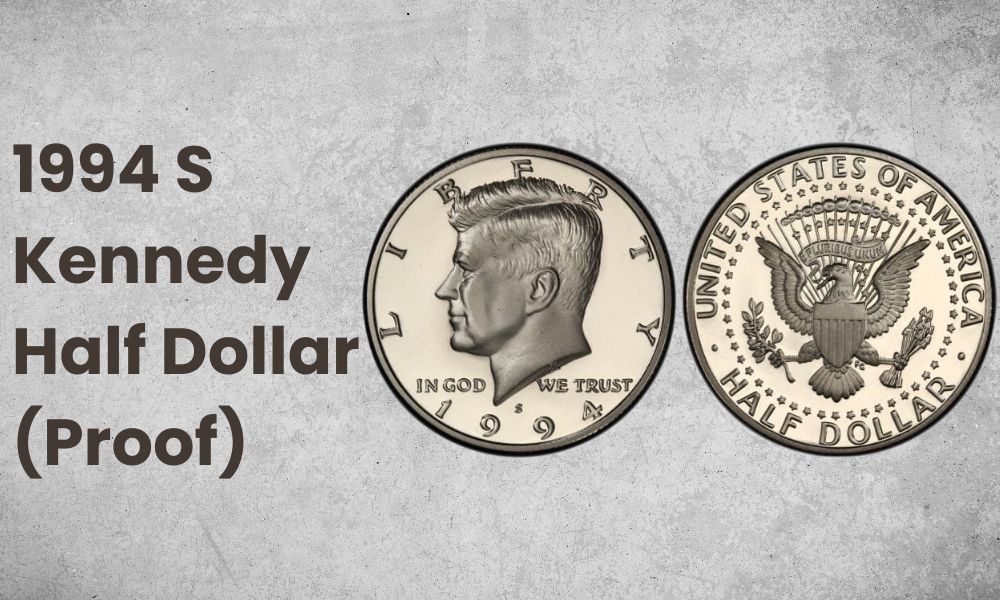
- Year of minting: 1994
- Mint Mark: S
- Place of minting: San Francisco
- Quantity produced: 2,484,594
- Face Value: $0.50
- Price: $0.50 to $9.00
- Mass: 11.34 grams
- Edge: Reeded
- Designer: Gilroy Roberts/Frank Gasparro
- Composition: 25% nickel and 75% copper
- Diameter: 30.61 mm
- Thickness: 2.15 mm
In the 1994 S half dollar proof is where the value of this coin starts to increase its potential value significantly. While some of these coins are worth their face value, most of them can reach up to $9. Of course, the better condition of the coin, the higher it’s worth.
The min mark on this proof coin is “S”, suggesting it was minted in San Francisco. This particular coin existed in a quantity of 2,484,591 by the time 1994 came to an end.
The San Francisco mint specialized in creating proof coins. This is why the majority of all proofs are marked with “S”.
1994 S Silver Kennedy (Proof)
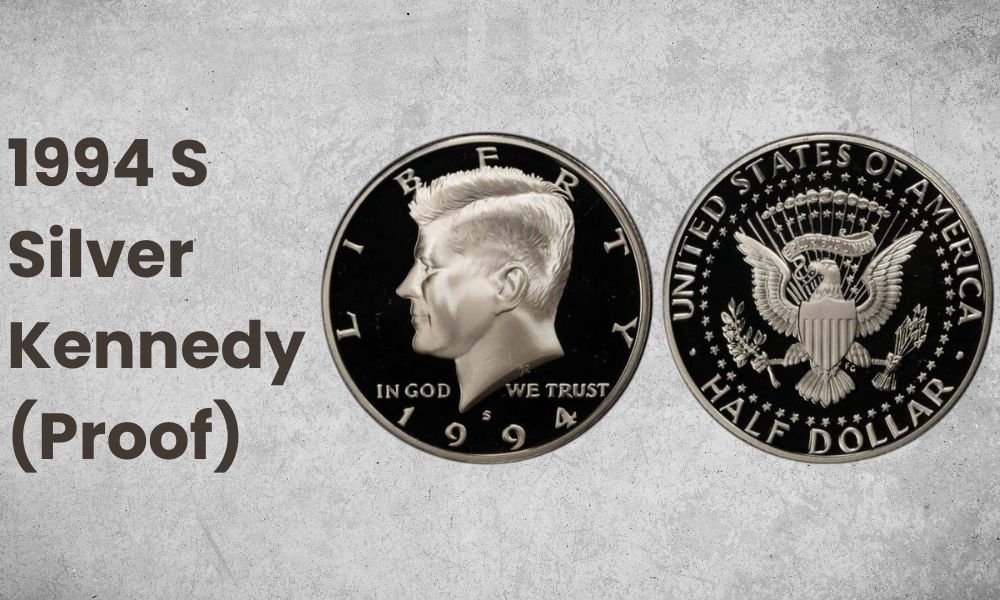
- Mint Mark: S
- Place of minting: San Francisco
- Quantity produced: 785,329
- Face Value: $0.50
- Price: $0.50 to $37.00 (or more)
- Mass: 11.34 grams
- Edge: Reeded
- Designer: Gilroy Roberts /Frank Gasparro
- Composition: 25% nickel and 75% copper
- Diameter: 30.61 mm
- Thickness: 2.15 mm
This is the most valuable Kennedy half dollar in prime condition – the 1994 S Silver Kennedy proof. One of the reasons for its value is the low number minted. Less than 1 million of these were ever made.
Just like the previous 1994 S half dollar proof, this one was also minted at the San Francisco mint. The reason why their value is higher is that the proof coins are much harder to produce.
The coins are more detailed, shiner, and overall more attractive. Proof coins are produced for the purpose of collectors only. Proof coins keep their luster, detail, and attractiveness because they never enter circulation.
Also Read: Top 15 Most Valuable Kennedy Half Dollar Worth Money
1994 Half Dollar History
The origin of the Kenney half dollar came after John F. Kennedys assassination in 1963. First Lady Jacqueline Kennedy was asked which coin would be best suitable to commemorate the late president and she decided on the half dollar coin. Benjamin Franklin was the previous portrait on the half dollar.
Only two months after Kennedy’s death, the new coin bill was approved by congress, in the December of -63. A few months after the passing of the bill, minting production began.
Gilroy Roberts and Frank Gasparro were appointed to design the half dollar. Roberts designed the obverse whereas Gasparro did the reverse.
The design of the half dollar features a left-facing Kennedy who appears to be half-smiling on the obverse. “Liberty” is inscribed along the coin’s upper edge surrounding the majority of Kenndy’s head. The common and recurring phrase “In God We Trust” is also on the obverse.
The reverse is packed with details. In the center is an eagle with its wings spread covered by the Union Shield. It holds a banner in its beak which reads “E Pluribus Enum”, which means “out of many, one”. This Latin Phrase is often featured on American coins.
Even more, is that the Eagle holds on to arrows using one foot, and an olive branch using the other. Surrounding the Eagle are 50 stars, representing all 50 states.
The bottom of the coin reads “half dollar” and the upper side of the coin reads “United States of America”.
Due to the popularity of the coin, and as a way to honor the late president, people decided to hoard the coin rather than spend it. This causes a half dollar shortage. The value of the circulating half dollars had to be increased to $160 million.
Within the next 30 years, the value of the half dollars circulating was over $400 million.
The composition of the Kenndy half dollar changed throughout the years. The silver shortage which started in 1965, one year after the Kennedy half dollar started production, forced the mints to change the compositions of their coins.
Within the next 5-7 years, all coins struck in the United States had gone from being mostly silver to being mostly copper. The original 1964 half dollar was approximately 90%. By the time the 90s rolled around the Kennedy coin was 75% copper and 25% nickel.
Also Read: Top 19 Most Valuable Mexican Coins Worth Money
1994 half dollar Grading
When the experts are grading coins they’re looking at specific features that are of particular importance to the design and quality of the coin. These are called the high points. A low-graded half dollar will see these features smudged out from circulation; while top-condition coins have all these features intact.
Here are some examples of these high-point details. On the 1994 half dollar, these high points are featured on Kennedy’s cheek, jaw, ear, and the bottom center portion of the neck. Where the hair parts is another high point that must remain intact when the collector is inspecting the condition of the coin.
Also Read: Top 16 Most Valuable Old Chinese Coins Worth Money
List of 1994 half dollar Error
Since the Kennedy half dollar is a contemporary coin, most of the coins among the public are worth their face value – namely half of a dollar. It’s not only uncirculated proofs that can reach higher values. There are some cases where errors occur in the minting process.
Coins that possess features of these errors can be valued at several hundred or even thousands of dollars. Collectors are interested in these coins due to their rarity and unique appearances. Here we’ll briefly discuss what these errors are.
Double strike Error
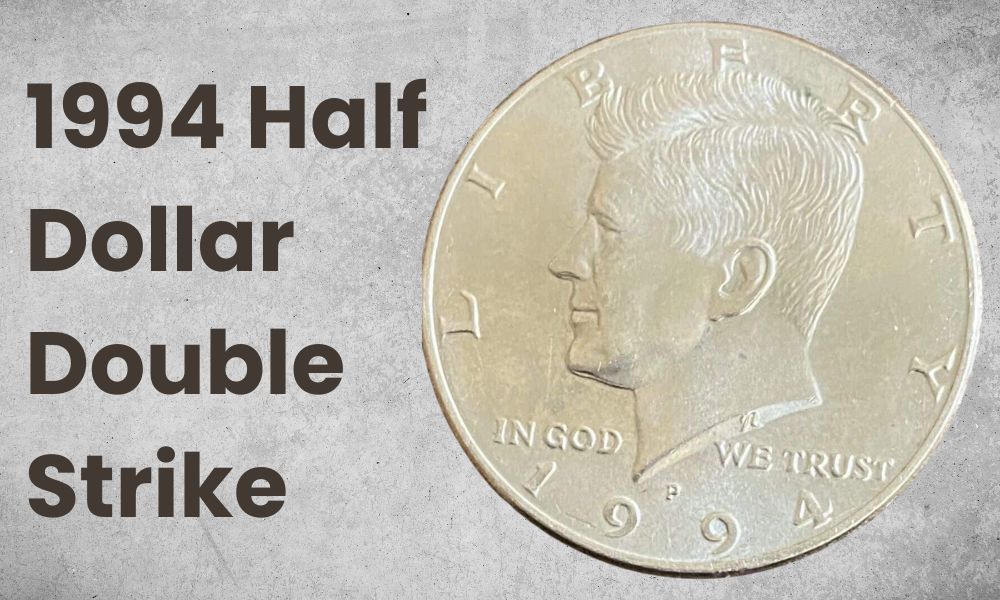
This error is one of the more common ones that can occur during the minting process. Double strike means that the die hit the planchet twice, meaning the same image was printed two times on top of each other.
This results in unique detailed features and lines on the coins.
Clashed Die
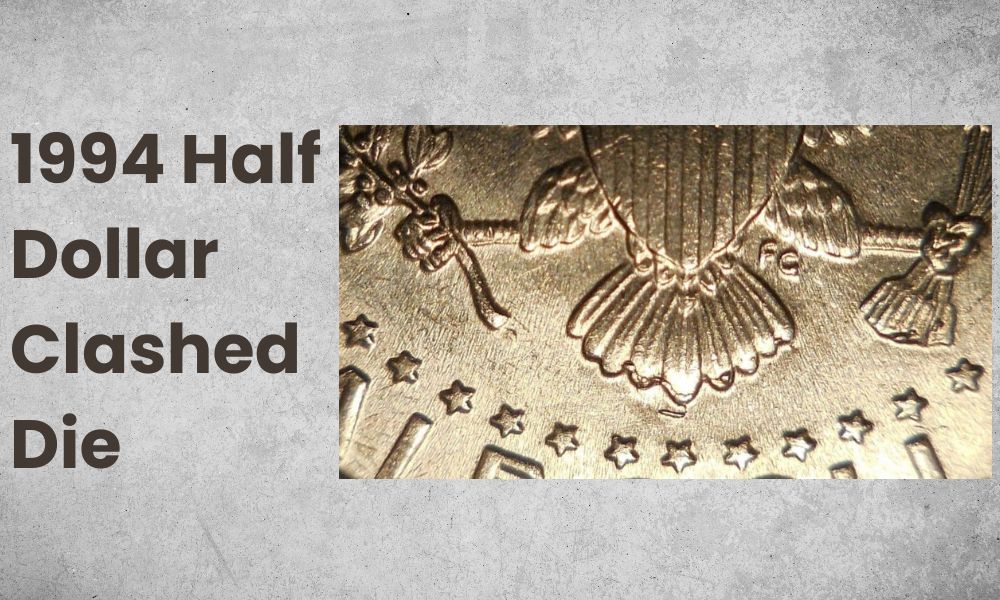
The clashed die is the result of the obverse and reverse being damaged when they’re being struck. This can cause the die to break and the cracks from the die will be engraved in the coin. These cracks can show up and look like features on Kenndy’s face.
Cracked Coin
If the planchet is not placed carefully and correctly before being struck, the die can crack it. There are examples of Kennedy half dollars that are missing a solid piece due to the coin being cracked upon production.
Also Read: Top 10 Most Valuable Foreign Coins Worth Money
1994 Half Dollar FAQ
Are 1994 half dollars rare?
No, in general, they’re not rare. These are quite common today, rather inexpensive, and easy to find in circulated conditions. Uncirculated coins or ones with major errors to high points, however, are rare and can have a significant value.
How much is a 1994 coin worth?
Unless uncirculated or have very rare defects, the worth of a 1994 coin will be close to its original face value. For example, most 1994 Kennedy half dollars are worth exactly half of a dollar.
Are Kennedy half dollars worth keeping?
The coin is not particularly rare and not valuable in average circulated conditions. There are some of these coins that could sell for 3-9 dollars, but in general, their worth is their face value.
Which JFK half dollars are silver?
The only Kennedy half dollars made out of silver are the ones stuck in 1964. They consist of 90% silver. However, the following year there was a silver shortage. This forced all mints to change the composition of all coins. The Kennedy half dollar, just like every other coin, now had a composition of 75% copper and 25% nickel.
